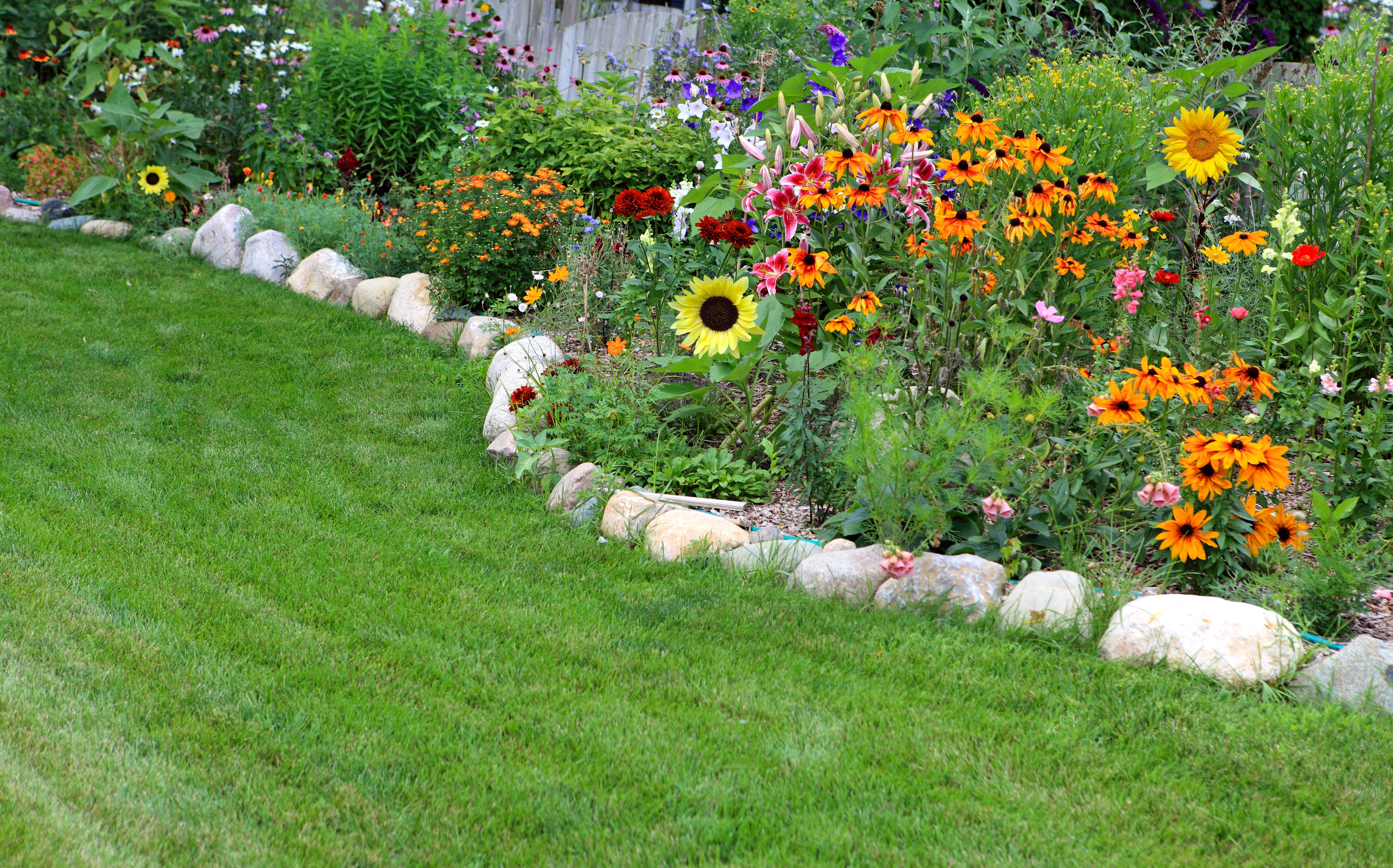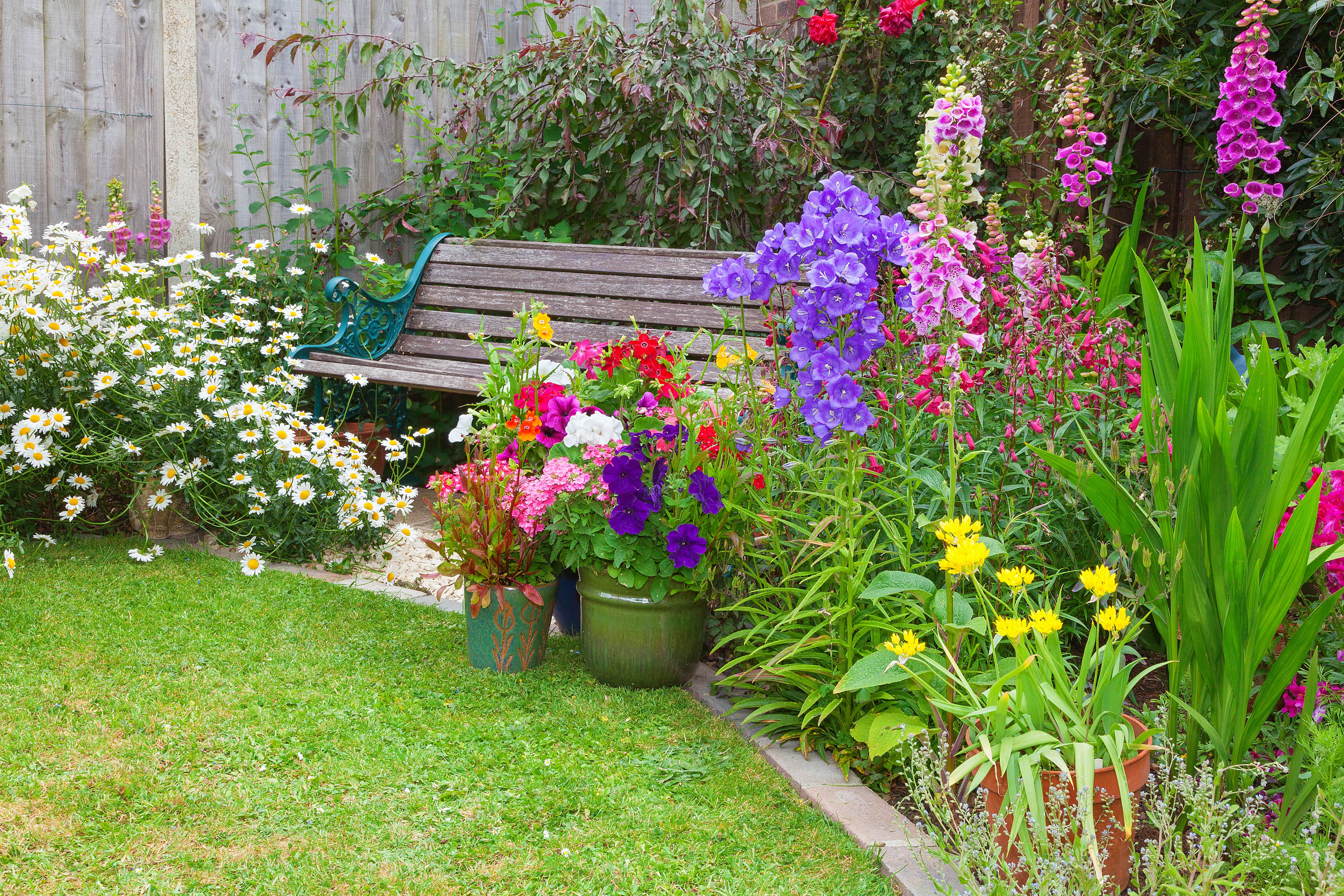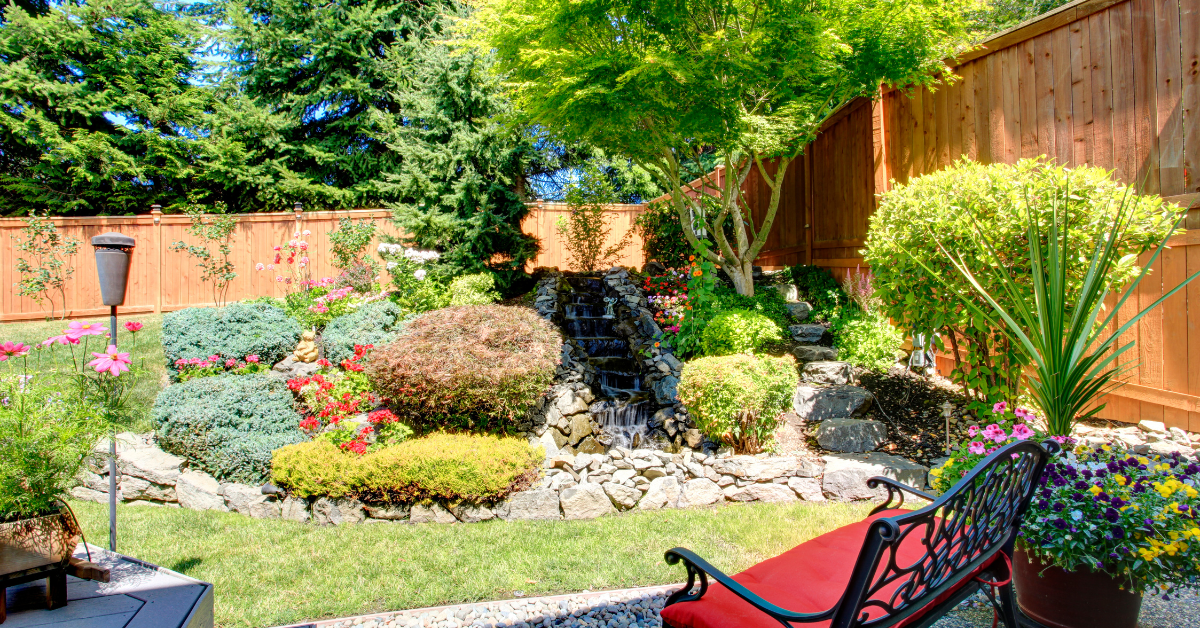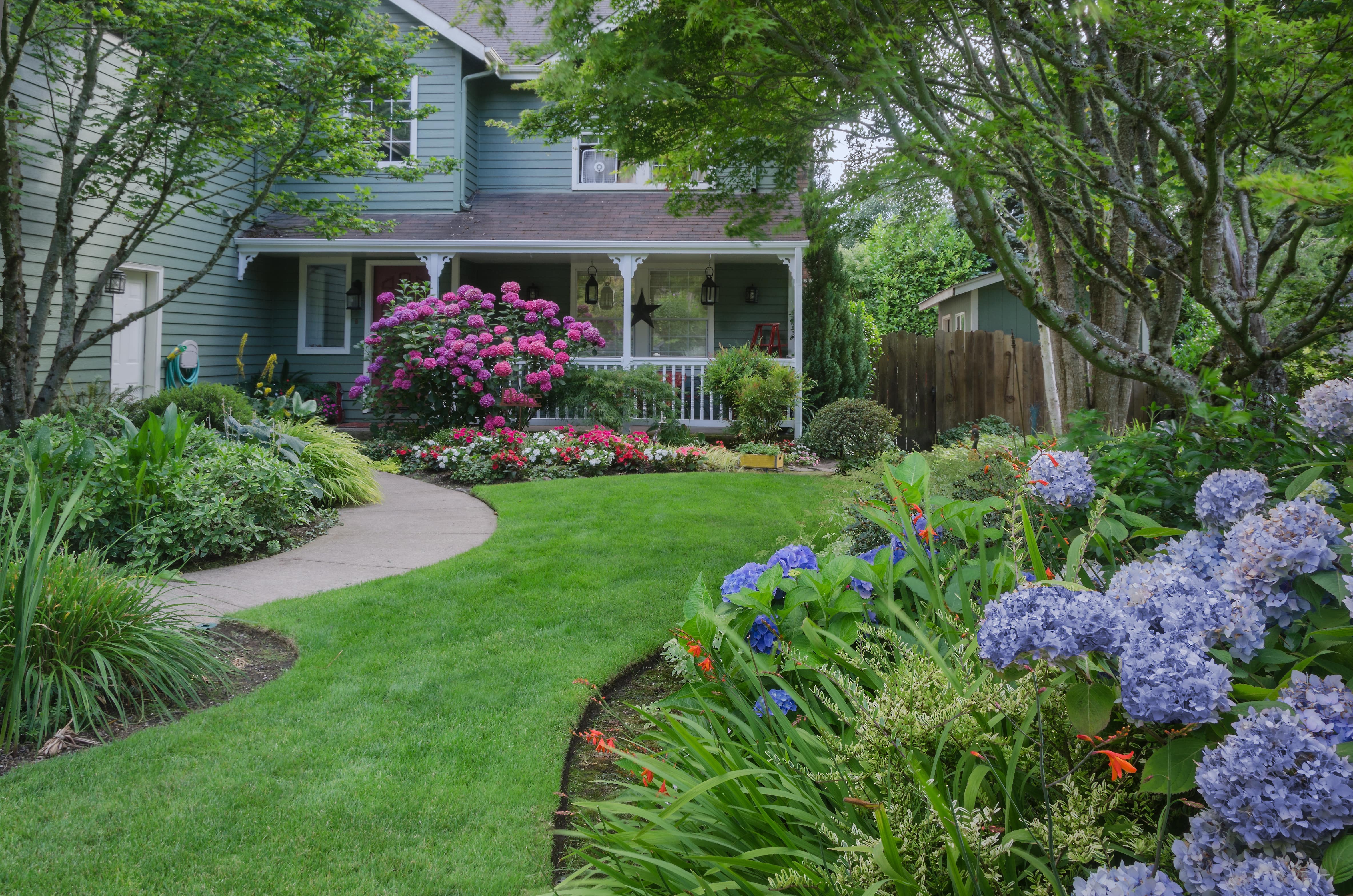Green Thumb Guide: 12 Essential Gardening Tips for Beginners
By Sarah Finazzo • January 22, 2024

Gardening can seem like a daunting endeavor, especially for those who are new to the hobby. It can be overwhelming knowing where to start , what's a weed, when to mulch or prune - and much more. However, whether you have a sprawling backyard or a tiny balcony, gardening can be rewarding and fun.
In this article, we tapped our talented design team to get some of their best gardening tips to help you feel confident in the garden.
Join our Newsletter
Sign up for our email list to receive exclusive promotions and landscape design inspiration.

#1 // Be Hardiness Zone Savvy
Knowing your hardiness zone is crucial for successful gardening. Hardiness zones provide all the information you need to know about the climatic conditions in your region, specifically the average minimum winter temperatures. This knowledge helps you select plants that are most likely to thrive and survive in your area. Different plants have varying temperature tolerances, and planting species that are not suited to your zone can lead to disappointment and frustration. When shopping for plants it's important to make sure they work in your By understanding your zone to ensure they have the best chance of flourishing in your garden.
#2 // Sun Light Conditions
One of our top gardening tips is to understand the sunlight conditions in your yard. Sunlight is a primary factor that directly impacts plant growth and development. Some plants thrive in full sun, while others prefer partial or full shade. By knowing the sunlight conditions in your yard, you can select plants that are well-suited to your specific environment. Placing sun-loving plants in areas with ample sunlight and shade-tolerant plants in shadier spots ensures optimal growth and prevents potential damage or stunted growth.
To figure this out, check in on your yard throughout the day. Monitoring sunlight patterns will help you determine the ideal placement for your garden beds, containers, or even the construction of additional structures such as a pergola or shade covers.

#3 // KnowYour Maintenance Threshold
Before selecting the best plants for your yard, consider the level of maintenance you are willing to invest. Different plants have varying care requirements, and understanding your desired maintenance level is crucial for a thriving and manageable garden. Some plants may require regular pruning, deadheading, or fertilizing, while others are low-maintenance and more self-sufficient. If you are looking for a low maintenance garden, focus on native plants that are known to thrive in your region.
#4 // Evaluate Your Soil
Understanding your soil before you start planting is very helpful. Soil composition affects plant health, nutrient availability, drainage, and overall growth. By knowing about your soil, you can adapt it if needed to create an optimal environment for your plants.
Conducting a soil test helps determine its pH level, nutrient content, and texture. If the soil is lacking in nutrients or has an imbalanced pH, amendments like organic matter, compost, or specific fertilizers can be added to improve its quality.
Additionally, adjusting soil drainage can be achieved by incorporating organic matter or you can try out raised garden beds, where you can utilize soil for your specific needs.

#5 // Weed Regularly
Regular weeding is key for maintaining a successful garden. Weeds compete with your desired plants for resources such as water, nutrients, and sunlight. If left unchecked, weeds can quickly overtake your garden, stifling the growth of your carefully chosen plants.
By removing weeds promptly, you reduce the risk of them spreading, reduce competition for resources, and minimize the likelihood of pests and diseases taking hold. Weed removal can be a taxing job and is very manual. Make sure you have the right tools and make sure to get the roots so they don't grow back quickly!
#6 // Use Mulch
Mulch acts as a protective layer over the soil, providing a range of benefits. You can use purchased organic mulch or even finely shredded leaves can get the job done. Why mulch? Firstly, it helps regulate soil temperature by insulating the soil, keeping it cooler in hot weather and warmer during colder periods. Mulch also plays a vital role in moisture retention, reducing evaporation and conserving water by keeping the soil consistently moist. Mulch also suppresses weed growth by blocking sunlight and inhibiting weed seed germination. So after you weed (our former gardening tips task) spread that mulch to keep the weeds at bay.

#7 // Onderstand Mature Sizes Matter
Taking into consideration a plant's full size before planting it is crucial for maintaining a well-planned garden that you won't have to dig up to make more room from growing plants. Plants have specific growth habits and sizes that determine how they will fit into the landscape over time. By understanding the ultimate size of a plant, you can ensure that it has enough space to grow and thrive without overcrowding other nearby plants.
Planting a small shrub or tree in an area that will eventually become too confined can lead to issues such as stunted growth and competition for resources. This can put you in a situation where you to have to dig it up and transplant, which can be stressful on the plant and risk its growth.
#8 // Water to Establish
Watering adequately to establish newly planted plants is an import gardening practice. During the initial stages after planting, plants rely on consistent moisture to establish their root systems and promote healthy growth. Ample watering helps ensure that the plant receives the necessary hydration and nutrients for successful establishment.
New plants have not yet developed an extensive root system to seek out water on their own, making them more vulnerable to drying out. By providing sufficient water, you help the plant establish strong roots, allowing it to access water and nutrients from the surrounding soil.
Regular watering also helps prevent wilting and stress, enabling the plant to focus on establishing itself and growing vigorously.
Join our Newsletter
Sign up for our email list to receive exclusive promotions and landscape design inspiration.

#9 // Learn Your Frost Dates
Knowing your frost dates is crucial for successful gardening and protecting your plants from potential damage. Frost dates indicate the average dates of the last frost in the spring and the first frost in the fall in your specific region. Understanding these dates helps you plan your planting schedule accordingly, ensuring that you start seeds or transplant seedlings at the appropriate time. Planting too early can expose delicate plants to frost damage, while planting too late may result in a shorter growing season.
#10 // Research Your Pests
Knowing what pests are potentially in your area can save you time and money in the long run. Imagine planting a long row of beautiful impatience only to have a local deer make it an after school snack?
Knowing if you have deer, bunnies or other wildlife can help you plan accordingly with pest-resistant plant varieties, fencing or other measures.

#11 // Pruning Maintenance
Pruning your plants correctly plays a vital role in maintaining their health and promoting a flourishing garden. Pruning involves the selective removal of specific branches or stems to shape the plant, control its size, and enhance its overall appearance.
By pruning, you encourage proper airflow and light penetration, reducing the risk of disease and promoting healthy growth. Pruning also stimulates new growth, leading to a fuller and more abundant plant and garden.
Different plants have different pruning techniques and different timing to prune, so it takes some research. However, proper pruning will help your garden thrive and keep it looking tidy and neat.
#12 // Vegetable Gardening Tips
Many flower bed practices extend to fruit or vegetable gardens, however there are a few unique vegetable garden tips that can help you be successful! Here are a few examples:
- Crop Rotation: Vegetable gardens greatly benefit from crop rotation. Rotating crops means changing the location of different vegetable families each year to prevent the buildup of pests and diseases in the soil. This practice helps maintain soil health and reduce the risk of specific pests and diseases targeting particular plant species.
- Succession Planting: In a vegetable garden, succession planting involves planting new crops in stages or intervals to ensure a continuous harvest throughout the growing season. By staggering planting dates, you can maximize your harvest and prevent a sudden surplus or scarcity of certain vegetables.
- Harvesting: Harvesting is a critical aspect of vegetable gardening. Unlike flower gardens, where blooms are primarily enjoyed visually, vegetables need to be harvested at the right time for optimal flavor and quality. Learning the correct time to harvest different vegetables and understanding proper storage techniques will help you enjoy your produce at its best and minimize waste.
- Support Structures: Certain vegetables, such as tomatoes, cucumbers, and peas, often require support structures like trellises, stakes, or cages to keep them upright and maximize space utilization. Providing these structures in a vegetable garden ensures proper growth, easy access for maintenance, and improved airflow around the plants.
- Intensive Planting and Spacing: Vegetable gardens often utilize intensive planting techniques to maximize yields in limited space. Unlike flower beds that may focus on aesthetics and spacing for individual plant growth, vegetables can be planted closer together in rows or raised beds, utilizing intercropping and companion planting methods to optimize space and maximize productivity.

Learning to garden can be fun and rewarding. Gardening allows endless opportunities for creativity, learning, and exploration. So, embrace the learning process, embrace the challenges, and most importantly, embrace the fun. Let your passion for gardening flourish and enjoy the incredible sense of fulfillment that comes with watching your garden thrive. Happy gardening, and may your green thumb continue to bring you joy for years to come!

Join our Newsletter
Sign up for our email list to receive exclusive promotions and landscape design inspiration.
About Tilly
Tilly’s easy online landscape design process has been embraced by homeowners across the country and in Canada. Tilly breaks packages into the Front Yard, Backyard or your Full Yard. We match you with a professional landscape designer who is familiar with your region to create the perfect custom plan for your outdoor space.
To start our process you’ll fill out a questionnaire about your property that helps our design team understand your goals, needs and existing landscape. You can add 3d renders, lighting plans or side yards to your design package. You’ll then meet with your designer on a video call, show them your space and discuss your priorities.
Whether you are just looking to add some curb appeal or transform your entire backyard - we have a team for you!
Read more about: Landscape Design Tips